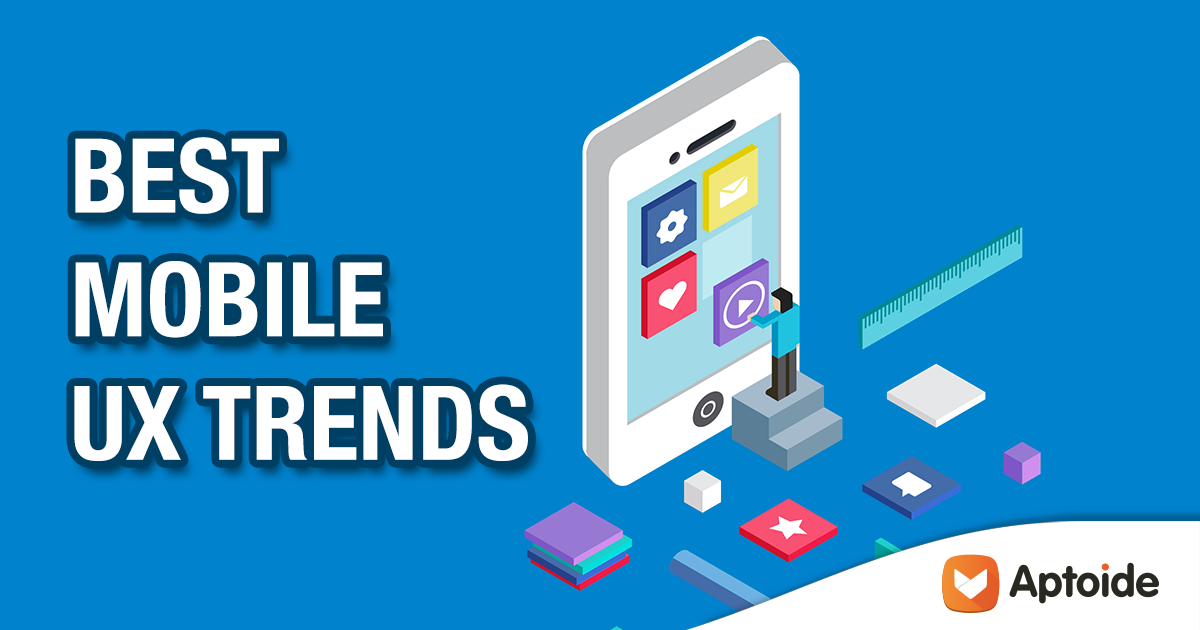There’s a lot to be said about User Experience in the app world. User Experience, or UX, is basically understanding people emotions and attitudes when they’re using a particular system, service or product. Of course, you KNEW that! But to say that “change is the only constant” is a big understatement. Mobile devices are always becoming faster, better and more potent. Apps are following right behind and becoming more custom fit, clear-cut and personalized.
But, let’s have a closer look at what’s trending in UX for apps right now:
Convo Interfaces
Recent studies show that the average user only uses around 3 apps frequently and that one of them is a messaging app. It’s no wonder everyone is betting their (mobile) chips into that. People enjoy chatting: fact. So the best way to take advantage of that is to offer that feature in places where a few years ago it would be unthinkable. Luka, for example, where humans talk to bots about daily topics. Chatbots and voice-activated platforms with AI (think Siri, Cortana, Echo or Alexa) will dominate in the years to come.
Personalization in UI Design
We’re all different, so why should the apps behave the same towards everyone? Exactly. By now, you must have heard about “responsive design”. Personalization of UI design follows that principle but with a key difference. Responsive design revolves around adapting a layout to a wide range of devices (the same website adapts to the screen size of a TV, a monitor or a phone). Personalization in UI design is about adapting a layout to a person. This can be achieved through already available metadata. By tapping into information already provided by the user, apps can determine if they should increase the font size, decrease screen brightness, be BW or more colourful and so on. We can expect mobile app UI design to move away from being device-focused and move closer to being user-focused.
UX Analytics
Mobile apps have been around long enough for us to know for a fact two things. 1) Apps are no longer just used by the young and tech-savvy, but by anyone everywhere; and 2) Users now know they can get the best, so they demand the best. The thing is, the best cannot be reserved only to some, it needs to be “best for all”. This can be achieved by drilling down into individual UX and by drawing conclusions from specific use cases. People usually struggle to use apps the way they were intended to, so without an eagle eye (and good communication) we can expect frustration followed by a negative review on the app store. Analyzing user experiences and in-app behavior can be accomplished through qualitative analytics tools such as heatmaps or user sessions recordings. These tools allow developers to pinpoint the weaknesses, eliminate bugs or design a more intuitive interface. Qualitative analytics make sure your app is reaching its full potential. This trend is expected to pick up big this year and to have a strong effect on UX.
VR / AR
Another trend that promises to completely change the way we use apps is the Virtual and Augmented reality technology. It’s not a new concept, sure, but the improvement in smartphone tech has allowed AR and VR to start making an impact. There are four elements today that have made it possible: faster processors, better cameras, higher quality displays and faster communication speeds. 4G speeds are basically globally available now and 5G is expected to hit the streets just in time for the 2018 Winter Olympics. This will speed things for VR and AR apps. Both have huge potential in tourism (“visiting” models of what it used to be there), construction (‘walk’ around your new house before deciding to renovate), shopping (“try” out your new dress before buying), education (medicine modules for students), communication (virtual boardroom meeting, anyone?), entertainment (go into the movies instead of going to the movies), and pretty much any other industry. The only thing that is limiting AR an VR right now is our imagination 😅😅😅
Navigation
One trend that is slowly (but surely) picking up is offering users different alternatives to moving through the app. Let’s see:
Linear navigation means all users can use and navigate through the app the same way – an approach to design some UI / UX folks see as ‘herding cattle’. Uber is a good example. There, all users: 1) set a pickup location, 2) set the destination, 3) press ‘Request’, 4) rate the driver. What we are expecting to see is new and creative navigation solutions, which will allow users to move through the app more freely. Amazon Shopping is a good example, users can browse various categories and subcategories without needing to go down a certain path to get to them.
One-handed navigation is also something we are expecting to be slowly phased out. Nowadays, smartphones are quite large, with screens so big many people cannot reach their corners by using one hand. Implementing smarter navigation solutions, which will keep in mind how people use the smartphone, will also be a huge trend.
Hamburger menu will continue to be despised. Indeed, it is considered by many as the main culprit for poor user engagement, and low discoverability. So forget this one.
We will be hearing a lot more about parallax scrolling (like the one Summly, Yelp, or Google Maps already have) and non-linear navigation. Thank God. New navigation solutions have the potential to completely reshape UX. A non-linear approach can result in a more personalized experience, as each user will approach the app in their own, unique way. Eliminating the hamburger menu can improve discoverability, meaning many useful app features will remain hidden no more. Finally, thumb-friendly navigation will make life easier for many users, especially those with large screens.
Gif Artist: weinventeyou
